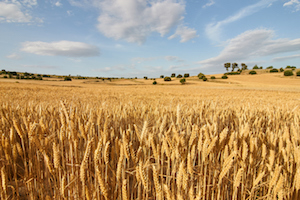White heads have been appearing in wheat fields across Kansas this growing season and now, experts from the Department of Agronomy at Kansas State University are shedding light on possible causes.
While there may be several explanations, one of the most plausible is freeze injury. When a freeze occurs about the boot stage or a little earlier, there can be damage to the lower stem, which cuts off water and nutrients to the developing head. As a result, the stem does not develop in its entirety.
Hail can also be a possible reason for the development of white heads in wheat. Producers will notice that hail can break the connection between the stem and the head, or damage just a portion of the head and cause it to turn white.
A disease known as dryland root rot is also not uncommon in wheat. The condition, which is brought on by the Fusarium fungus, causes white heads and typically results in pinkish bases. This disease is most common under drought stress conditions and is generally mistaken for either drought stress or take-all.
Head scab is another issue that producers across Kansas have been running into, mostly as a result of rainy weather while wheat is flowering. In this instance, some heads can potentially become infected with Fusarium and turn white.
Take-all, which is the result of high pH soils, can also result in white heads in wheat. Sharp eyespot, another common disease, has also been spotted this season, along with wheat stem maggot damage.
For more information on what may be causing white heads in your wheat, visit the KSU Department of Agronomy website.
